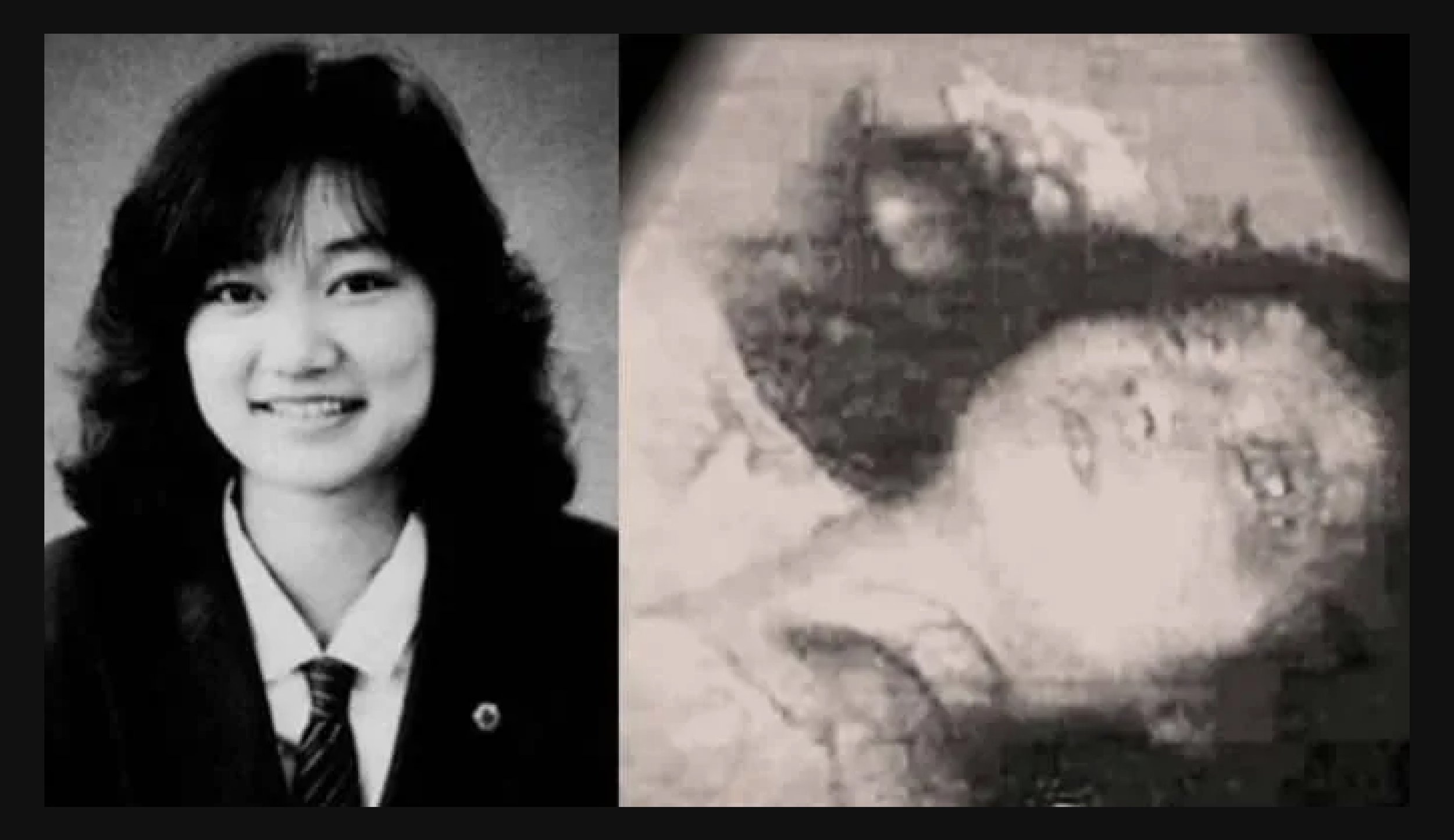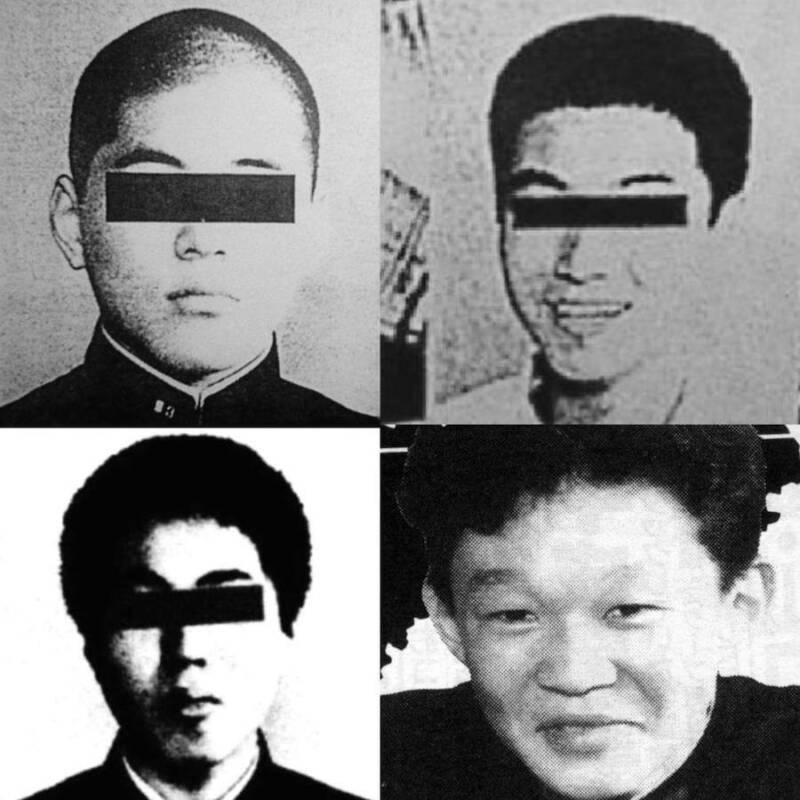Junko Furuta: The Unspeakable Tragedy That Shook Japan
Can the darkest chapters of human history truly be understood? The case of Junko Furuta stands as a chilling testament to the depths of human cruelty, a story that continues to haunt the collective conscience of Japan and the world.
The name Junko Furuta evokes a reaction of shock and sorrow from anyone familiar with her tragic story. It is a tale of unimaginable suffering, a stark reminder of the vulnerability of individuals, and a profound exploration of the darkness that can reside within the human heart. This case, which exposed the dark underbelly of Japanese society, continues to be a focal point for discussions on justice, societal failings, and the enduring impact of trauma. The events, which unfolded in November 1988 in Adachi, Tokyo, mark the beginning of an ordeal that would shock the nation. Junko Furuta, a vibrant 17-year-old, was kidnapped by a group of teenagers. This was merely the first step in a descent into a nightmare.
| Full Name: | Furuta Junko |
| Born: | January 18, 1971, in Misato, Saitama Prefecture, Japan |
| Age at the time of abduction: | 17 |
| Family: | Parents, older brother, and younger brother. |
| Incident: | Kidnapped, tortured, and murdered by four teenagers. |
| Date of Kidnapping: | November 1988 |
| Location of Kidnapping: | Adachi, Tokyo, Japan |
| Perpetrators: | Hiroshi Miyano, J Ogura, Shinji Minato, and Yasushi Watanabe |
| Additional Perpetrators Involved: | Two others (16 at the time) participated in sexual assaults but not the murder. |
| Duration of Torture: | 44 days |
| Legal Outcome: | The perpetrators were tried and convicted. The case led to discussions about the treatment of juveniles in the legal system. |
| Impact: | Shook Japan to its core, leading to widespread discussions about juvenile justice and societal failings. |
| Legacy: | Inspired several movies and a manga, sparking international outrage and continued discourse on the tragedy. |
| Reference: | Wikipedia: Murder of Junko Furuta |
On an ordinary day in November 1988, in Adachi, Tokyo, Junko Furuta, a young woman with her life ahead of her, was on her way home when she was targeted. The events that followed were anything but ordinary. Hiroshi Miyano, one of the perpetrators, instructed his friend Nobuharu Minato to initiate the act by forcing Furuta from her bicycle. Miyano then took control of the situation, offering to escort her home. Instead, she was led into an abandoned warehouse. It was here that the unimaginable began. Miyano, along with his accomplices, subjected her to a period of prolonged captivity marked by relentless brutality.
- Bolly4u Your Guide To Free Movies Entertainment Discover Now
- Uncut Web Series More Where To Watch In 2024 Beyond
Furuta's ordeal started with physical and sexual assaults. Miyano's actions quickly spiraled into an abyss of depravity. The abandoned warehouse became a prison, and the perpetrators, driven by their own perverse desires and a twisted sense of power, turned her life into a living hell. For forty-four agonizing days, she endured horrific torture, both physical and psychological. The details, horrifying in their graphic nature, were brought to light during the trial and highlighted the cruelty to which she was subjected.
The level of violence and the sadistic nature of the abuse shocked Japan. The perpetrators, emboldened by their actions, committed acts of unimaginable barbarity. This included severe beatings, sexual assaults, and other forms of torture designed to degrade and break her spirit. She was denied food, sleep, and any semblance of human dignity. The warehouse became a stage for unimaginable cruelty, with the perpetrators reveling in their power over their victim.
The case was not merely a crime; it was a systematic dismantling of a human being. Furuta, once a vibrant teenager, was reduced to a symbol of human vulnerability. Her suffering exposed the underbelly of society, the weaknesses of the legal system, and the potential for evil to fester within a group. The actions of the perpetrators were not just random acts of violence. They were driven by a combination of factors, including a desperate desire to control, a warped sense of entitlement, and the dark influence of group dynamics. The case of Junko Furuta became a mirror reflecting the darkest aspects of the human condition.
- Mkvcinemas Risks Alternatives For Movie Downloads
- Movierulz Risks Alternatives Where To Watch Telugu Movies News
The details of the case, revealed during the trial, sent shockwaves through Japan and the international community. Furutas final moments, the brutality that led to her death, stand as a chilling testament to the depths of human depravity. The trial began on July 31, 1989, in Tokyo, and the testimony provided a harrowing insight into the 44 days of torture Furuta had to endure. The perpetrators were eventually apprehended and brought to justice, although the legal proceedings and sentences raised significant questions about the effectiveness of the Japanese juvenile justice system.
The legal ramifications of the Furuta case were felt throughout Japan. Under Japan's juvenile law, which was in place at the time, the perpetrators received sentences that were seen as lenient by many. The sentences sparked public outrage, leading to broader discussions about the treatment of juvenile offenders, the need for stricter laws, and the importance of protecting the rights of victims. The case brought to light the systemic failures in the legal system. It also highlighted the challenges of rehabilitation and the need for a more comprehensive approach to addressing juvenile crime.
The immediate response to the case revealed a complicated interplay of emotions, from outrage and disbelief to profound sadness. Classmates of Furutas wept for their friend at her funeral, and the community struggled to come to terms with the scale of the tragedy. The murder of Junko Furuta served as a catalyst for increased scrutiny of juvenile justice in Japan. The case highlighted existing loopholes within the system, and the debate over how to reform the legal approach to crimes committed by young offenders intensified.
The impact of the Furuta case extends far beyond the courtroom and the immediate aftermath. It resonated through popular culture, inspiring several movies and a manga illustrated by Kamata Youji. The story of Junko Furuta became a symbol of the horrors of violence and the devastating impact of unchecked cruelty. It sparked international outrage and helped to raise awareness about the vulnerability of individuals in the face of organized violence. The fact that such a crime could occur, and the subsequent legal proceedings, ignited a national conversation about the values, morals, and responsibilities of Japanese society.
The story of Junko Furuta also highlights the challenges of memorialization. How does a society remember and honor a victim of such brutal violence? How do you prevent the story from being forgotten and ensure that the lessons learned from the tragedy are not lost? The case led to debates about the appropriate way to remember Furuta, ensuring her memory was preserved while avoiding sensationalism or glorification of the crime. The goal was to use the story to educate, inform, and promote change to make sure a similar tragedy would never happen again.
The injustice of Junko's case did not lead to immediate reforms of the Japanese juvenile justice system. However, that changed in 1997 after a string of tragic child murders in Kobe, Japan, served as a further reminder of the urgent need for change. This prompted a series of reforms, including stricter penalties for juvenile offenders and measures aimed at increasing the protection of victims. The case served as a powerful reminder that the safety and well-being of vulnerable members of society need to be prioritized.
The story of Junko Furuta is not easy to tell, nor is it easy to digest. It forces us to confront the darkest aspects of human nature. The details of her torture are disturbing, and the scale of the perpetrators' cruelty can be difficult to comprehend. Yet, the importance of remembering Junko Furuta's story lies in its ability to force us to reflect upon our own values, to confront the realities of violence, and to acknowledge the potential for evil that exists within society.
The legacy of Junko Furuta's case remains a cautionary tale, a reminder of the importance of vigilance, compassion, and a commitment to protecting the vulnerable. It also serves as a testament to the strength of the human spirit and the enduring need for justice and healing. The case serves as a call to action to create a society that is safe and just for all.

The Tragic Story of Junko Furuta A Case of Injustice and Outrage
.jpg?format=2500w)
Episode 366 The Korean “Junko Furuta” Case 26 Days Of Torture, SA

Junko Furuta's Murder And The Sickening Story Behind It